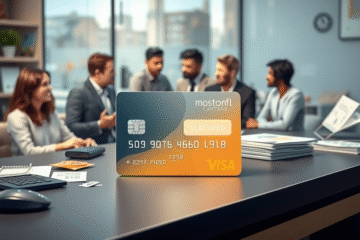Secure Virtual Credit Card for Safe Online Shopping
Virtual Credit cards have revolutionized the way we shop online, offering a secure and convenient alternative to traditional credit cards.
Start building your credit today!
Discover your perfect business credit card!
In this article, we will delve into the numerous benefits of using virtual credit cards for online shopping, focusing on how they enhance security for web transactions.
We will explore their unique features, such as the distinctive 16-digit card number, CVV code, and expiration date, which provide an extra layer of protection.
Additionally, we will discuss how virtual cards help safeguard your real credit card information while allowing you to conduct safe transactions across various websites and applications.
Understanding Virtual Card Technology
A virtual card serves as a digital representation of a physical credit card, offering a secure and versatile method for online shopping.
This technology provides users with a unique 16-digit card number, coupled with a distinct CVV code and expiration date, effectively keeping your real card details hidden from merchants.
JP Morgan’s insights elaborate that these cards are implemented for enhanced security, ensuring that sensitive financial information remains concealed during e-commerce and mobile app transactions.
One of the core concepts of virtual cards is that they are linked directly to a traditional credit account while obscuring the real account number.
This is particularly crucial as it minimizes the risk of fraud, providing a temporary shield against unauthorized access to your financial data.
Technology behind virtual cards involves the sophisticated usage of APIs and tokenization, creating a seamless payment experience without compromising security.
Beyond security, the practical advantages of using virtual cards extend to budget management and transaction tracking.
Users can set spending limits and transaction restrictions, adapting the card usage according to their needs.
This agility not only aids in optimizing budget allocations but also simplifies financial management for both personal and business purposes, as highlighted by Stripe’s guide on virtual cards.
- Efficient fraud prevention, discouraging unauthorized access
- Advanced control over spending limits and transaction tracking
- Optimized for secure and seamless digital transactions
Mechanics Behind Virtual Card Numbers
Virtual card numbers serve as a safer alternative to traditional credit card details by generating unique credentials for each transaction.
Unlike real card information, which can be easily compromised during data breaches, virtual card numbers are temporary and can be restricted to specific merchants or usage scenarios.
This isolation reduces the potential impact of fraud, ensuring that even if a virtual card’s information is leaked, the actual financial account remains protected.
Generation and Key Attributes
Virtual credit card numbers introduce an added layer of relevant security by using a process called randomization to generate a temporary number, CVV, and expiration date that differ from your real card details.
Issuing banks or card networks utilize complex algorithms to create these numbers, ensuring that each transaction is unique and difficult to compromise.
The use of dynamic CVV codes means these temporary numbers constantly change, making it far more secure for online shopping.
Additionally, these secure identifiers greatly minimize the risk of fraud.
According to sources like Chase, the technology securely masks your real card’s information, keeping it safe during transactions, enabling users to shop online without compromising their actual financial data.
Transaction Flow Steps
After a shopper enters a virtual card on a website or app, the transaction process swiftly begins.
Initially, the merchant submits the payment information, where the virtual card details are captured.
Then, the system tokenizes the data, replacing actual card details with unique tokens for enhanced virtual card solutions offer a frictionless purchasing experience anytime, anywhere.
By eliminating the need to share your physical card number, users can conduct transactions securely, enhancing their overall feeling of financial safety.
| With Virtual Card | Without Virtual Card |
|---|---|
| Instant lock capability | Complex process to block card |
| Temporary numbers for each use | Permanent number exposed |
| Autofill for faster transactions | Manual entry required |
Everyday Security Best Practices
For effective management and security of your virtual credit cards, prioritize generating new virtual numbers regularly.
This practice not only enhances your financial safety but also ensures each transaction you make online remains isolated.
Never reuse the same virtual number indefinitely, as this can expose you to potential breaches or unauthorized transactions.
By frequently updating your virtual card details, you minimize the risk of your financial information falling into the wrong hands, especially when shopping through various websites.
Meanwhile, make it a habit to monitor your statements vigilantly.
Regularly reviewing your account statements can help you identify any unfamiliar transactions promptly.
If you come across any suspicious activity, react quickly by contacting your card provider to safeguard your account.
Utilizing tools that offer instant transaction alerts can also be a proactive measure for staying informed.
For more safety tips, check out this article on Chase’s online security practices.
Finally, be cautious and ensure you conduct transactions over secure connections.
Look for “https://” in the URL and a padlock icon, indicating a secure environment.
For complete peace of mind, consider comprehensive resources such as this detailed guide on GetPluto’s insights on virtual credit cards, which provide additional security measures and best practices for using virtual cards.
By staying informed and adopting these strategies, you maintain control over your finances and protect yourself from potential threats.
Virtual Credit cards are an essential tool for enhancing online shopping security.
By using them, you can protect your financial information and shop with confidence, making your online transactions safer and more efficient.



0 Comments